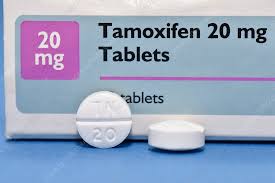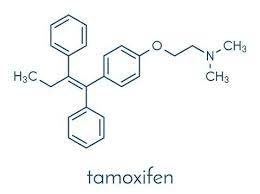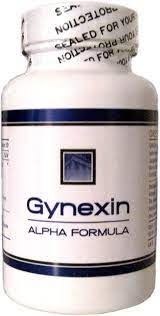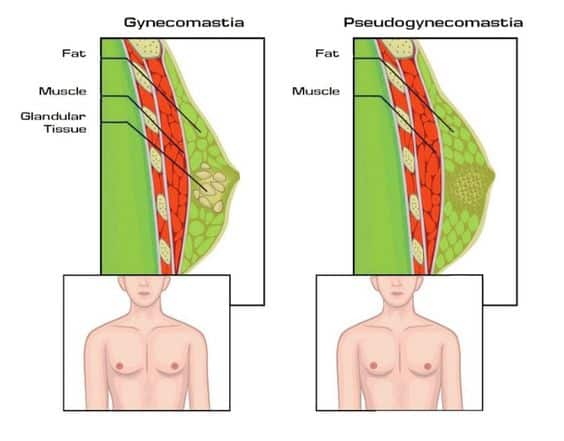Contact Us
 Dr. Delgado is a highly skilled surgeon specializing in gynecomastia surgery. Dr. Delgado has committed a significant amount of his practice to the care and education of men and boys with gynecomastia. Dr. Delgado’s practice philosophy is to provide the highest quality of patient care to the people who seek out his professional services. Dr. Delgado and his staff are committed to understanding their patients' concerns, educating them on their options, and executing the best surgical outcome for each patient. Dr. Delgado is the new owner of Gynecomastia.org since 2010. He has dedicated a significant part of his life and practice to improving the Gynecomastia.org community.
Dr. Delgado is a highly skilled surgeon specializing in gynecomastia surgery. Dr. Delgado has committed a significant amount of his practice to the care and education of men and boys with gynecomastia. Dr. Delgado’s practice philosophy is to provide the highest quality of patient care to the people who seek out his professional services. Dr. Delgado and his staff are committed to understanding their patients' concerns, educating them on their options, and executing the best surgical outcome for each patient. Dr. Delgado is the new owner of Gynecomastia.org since 2010. He has dedicated a significant part of his life and practice to improving the Gynecomastia.org community.

Abstract
Gynecomastia is a male breast condition that causes excess breast tissue growth. Gynecomastia is the enlargement of breasts for males and is often treated through surgical treatment. But not all men want surgery, and not all men can be candidates for surgery as there are many factors to consider. Because of this, there are clinical trials being done to test how medication can affect gynecomastia without undergoing surgical therapy.
Gynecomastia pills and supplements have become popular in the market today. The most popular gynecomastia pills are Gynexin, Gynectrol, and GyneMax. But these pills are only fat-burners―they only reduce excess breast fat tissue. True gynecomastia consists of breast fat and glandular tissue. Gynecomastia pills do not reduce glandular tissue. But a potential drug can address breast tissue. It’s called Tamoxifen.
Tamoxifen is a known treatment medication for hormone receptor-positive breast cancer. In addition, this medication works by preventing the development of breast carcinoma. Tamoxifen works by interfering with the effects of estrogen in the breast tissue. Tamoxifen is the most prescribed of the selective estrogen receptor modulators (SERM). Tamoxifen can either block or activate the function of the hormone estrogen. In the case of male breast cells, estrogen will block this action.
Tamoxifen is used in endocrine therapy. This treatment can influence the effects of estrogen in the cancer cells of the breast. This action, in turn, reduces the risk of the development of this cancer. Furthermore, people with dense breasts use Tamoxifen to reduce their breasts’ density.
Tamoxifen can help prevent the development of breast tissue. But its ability to treat gynecomastia is still debatable. Many medical professionals have not seen much success.
Tamoxifen for gynecomastia treatment is possible. But more clinical trials are required to know how safe, effective, and consistent it is.
Introduction
Gynecomastia, also known as “man boobs,” is a breast disorder that affects about 60% of men worldwide. Gynecomastia can be due to weight gain, drug use, anabolic steroids, or other underlying medical conditions. Male breast enlargement can affect patients’ psychological, social, and emotional well-being.
Luckily, today, gynecomastia can be treated by male breast reduction surgery. Several types of surgery can are available to treat gynecomastia. The surgical technique used for a specific patient depends on the gynecomastia grade or the severity of the breast enlargement. The various surgical procedures all produce successful and effective results.
However, not all patients are ready to undergo surgery, and not all men are good candidates or even want a surgical solution. Most men would prefer a non-surgical approach to solve their breast gland problem. Because of this, studies have been done to find a pharmaceutical solution. Some of these studies revolve around a drug called Tamoxifen. Many professionals see the option of Tamoxifen use for the treatment of gynecomastia.
The gynecomastia.psstage.com community has asked the question; does Tamoxifen treat gynecomastia? This article will discuss the pros and cons of Tamoxifen treatment of gynecomastia.
What is Tamoxifen?

Tamoxifen is an FDA-approved prescription drug used to treat hormone-receptor-positive breast cancer. It has also been used to reduce the development of cancer in high-risk patients. Since its approval in 1998, Tamoxifen had already helped both women and men diagnosed with cancer of the breast. Yet, it is not FDA-approved for the treatment of gynecomastia.
Tamoxifen works by preventing the development of male breast cancer. Treatment and prevention are possible by interfering with the effects of estrogen in the glandular tissue.
For this reason, Tamoxifen is the most prescribed selective estrogen receptor modulator (SERM). It can either block or activate the function of estrogen on specific breast cells. Tamoxifen blocks the estrogen action on breast cells. Furthermore, Tamoxifen attaches to proteins or the hormone receptors in the cancer cells. The blockage of the hormone receptors, in effect, stops cancer from advancing.
Tamoxifen is used in conjunction with other medications in patients who are undergoing hormonal treatment. Tamoxifen treatment can slow the progress of cancer cells by altering the body’s hormone balance.
In some cases, the rapid development of cancer is due to high estrogen levels. Tamoxifen lowers these estrogen levels and therefore can slow the development of cancer and reduce tumor growth.
Because of how Tamoxifen works on stopping the development of cancerous cells, it has shown its efficacy. It can also reduce recurring and invasive breast carcinoma. It can also help lessen the chances of high-risk people developing the disease.
Tamoxifen Use for Treatment of Gynecomastia
Gynecomastia is the development of breast tissue on a man’s chest. This tissue growth often involves breast glandular tissue, causing the main irreversible factor of gynecomastia, which is mixed with chest fat tissue. While there are several reasons why men develop gynecomastia, it is often a result of hormonal imbalance. The imbalance occurs when estrogen levels become too high and testosterone is lower.
Tamoxifen has both antiestrogenic and anti-tumor effects on glandular tissue. Researchers can use the “Tamoxifen effect” to determine if treatment is possible when gynecomastia occurs. Male breast reduction surgery is still the treatment of choice for gynecomastia, but Tamoxifen may be beneficial in some cases, especially pubertal gynecomastia.
Gynecomastia Pills and Estrogen Blockers

Men in the gynecomastia forum have reported their experience with these medications and pills for others to learn from.
The pills or supplements are “fat burners.” The current well-known medications are GyneMax, Gynexin, and Gynectrol. These fat-burning pills do not reduce the breast gland and are ineffective for this purpose.
Another type of medication that men often use to prevent gynecomastia are anti-estrogen drugs. These drugs are a trendy choice for bodybuilders. They function as “estrogen blockers,” which prevent the conversion of testosterone to estrogen.
The conversion is a process called “aromatization.” The blockage of this conversion makes the male hormone dominant. Aromatization prevents the development of female traits in the male’s body.
Yet, it is not always effective. Clinical experience shows that it is like “throwing the dice” on effectiveness. Furthermore, the benefits of anti-estrogen drugs decrease when the glandular tissue has already formed.
Effects of Medications on True Gynecomastia and Pseudogynecomastia

Pseudogynecomastia is male breast enlargement due to fat. Gynecomastia pills or supplements may be effective in this type of gynecomastia. And yet, so will diet and exercise!
To sum this up, gynecomastia pills may treat pseudogynecomastia but not true gynecomastia. This is due to the presence of the male breast gland.
Conclusion
Today, Tamoxifen produces successful treatment and prevention for breast cancer. Its ability to treat gynecomastia is still debatable. Medical professionals have not seen much success, to date. But this doesn’t mean that it is ineffective. More research still needs to be done to prove its efficacy. In conclusion, Tamoxifen use for the treatment of gynecomastia is inconclusive.
A current recommendation update published by Glenn D Braunstein, MD a UCLA professor in April 2021. His recommendations are as follows.
1. Prepubertal gynecomastia or adolescent gynecomastia results from hormone changes during puberty. Adolescent gynecomastia resolves in 80% of young men. The remaining 20% is permanent. In boys who experience breast pain or have severe gynecomastia, then, a trial of Tamoxifen may be recommended
2. Male gynecomastia present for over a year, do not usually respond to Tamoxifen.
3. Adult gynecomastia may result from medical issues or drug-induced gynecomastia. In these cases, treating the underlying medical condition may allow gynecomastia to resolve. If the cause can not be identified also known as idiopathic gynecomastia, a brief course of Tamoxifen may be recommended.
4. Men undergoing anti-androgen therapy for prostate cancer treatment are at risk for gynecomastia. Pretreatment with Tamoxifen is a option to prevent gynecomastia in men who have prostate cancer.
FAQs
Does Tamoxifen, an estrogen blocker, reduce gynecomastia?
Tamoxifen can be effective in treating gynecomastia in some cases. Prepubertal gynecomastia linked to effective treatment by giving a trial of Tamoxifen. Tamoxifen may be used for boys with pubertal gynecomastia who experience breast pain, tenderness, or a severe case. If there is no or minimal response in breast size the treatment options would be observation surgical excision.
How does Tamoxifen work for gyno?
Tamoxifen ( Nolvadex) is an FDA-approved prescription drug used to treat hormone-receptor-positive breast cancer. It works by eliminating the effect of estrogen on the estrogen receptor in breast tissue. This has shown to be very effective in female breast tissue. So, clinical trials have been conducted to evaluated Tomaxifen’s effect on preventing gynecomastia. The studies show that this treatment is inconsistent and works in some situations and not others. When the breast gland has already formed it is least effective, if not useless, but may reduce the size or discomfort.
What is the best medicine for gynecomastia?
The best medicine for treating gynecomastia is are in two categories of drugs. The first is a selective estrogen receptor modulator (SERM), like Tamoxifen. Tamoxifen therapy the effect of estrogen on the breast cells. This SERM has been shown to have some effectiveness against gynecomastia. But, it does have side effects and should be used for 3-6 months. Possible side effects for men taking Tamoxifen include headaches, nausea, hot flashes, skin rash, fatigue, sexual dysfunction, and weight and mood changes.
Why would a man take Tamoxifen?
Breast carcinoma in men is always hormone receptor-positive. Tamoxifen works by blocking growth potential on cancer cells. It also can be used in men and boys with gynecomastia who are experiencing pain or significant growth. It can also be used with benign prostatic hyperplasia and prostate cancer.
Does tamoxifen increase testosterone?
Yes. Tamoxifen works by blocking the negative feedback of estrogen on the hypothalamus and the pituitary gland. This results in the release of male hormones which increases free testosterone. This alteration in the estrogen to testosterone ratio results in “stimulation” of spermatogenesis.
What is the Tamoxifen dose for gyno?
The indication for Tamoxifen treatment is recent-onset or painful gynecomastia. The dosage suggested is 10-20 mg twice daily. Tamoxifen is used for 3-6 months before referral for surgical correction. Nausea and stomach upset are the most common side effects.
Who can prescribe Tamoxifen?
An endocrinologist is the best physician to prescribe Tamoxifen. The patient needs to be followed by laboratory testing and monitoring of blood levels. A plastic surgeon, in general, would not prescribe Tamoxifen but refer to an endocrinologist.
Do Gynecomastia pills or supplements work?
No. Gynecomastia pills are total-body fat-burning pills and can only change breast size by fat reduction. Gynecomastia pills and supplements are marketed worldwide but are ineffective in gynecomastia treatment.
Will Tamoxifen work for established gynecomastia?
No. Tamoxifen does not reduce the size of the breast tissue once it becomes established. For this reason, cancer doctors do not prescribe these medications when a breast tumor is present. This also applies to men; once gynecomastia is established Tamoxifen will not reduce the tissue much and not at all.
References
https://www.gynecomastia.org/gynecomastia-101/what-is-gynecomastia
https://www.gynecomastia.org/gynecomastia-101/medication-and-gynecomastia
https://www.gynecomastia.org/gynecomastia-101/male-breast-reduction-surgery
https://www.gynecomastia.org/forum/
https://my.clevelandclinic.org/health/diseases/16227-enlarged-male-breast-tissue-gynecomastia
https://www.breastcancer.org/treatment/hormonal-therapy/tamoxifen
https://www.webmd.com/drugs/2/drug-4497/tamoxifen-oral/details
https://my.clevelandclinic.org/health/drugs/9785-tamoxifen
https://www.healthline.com/health/tamoxifen-oral-tablet
https://medlineplus.gov/druginfo/meds/a682414.html
https://www.hopkinsmedicine.org/kimmel_
©Copyright 2020 Gynecomastia.org. All rights reserved. Use and access to this site are subject to the terms and conditions as set out in our Legal Statement and Privacy Statement.
The content on Gynecomastia.org is for educational purposes only. It is not intended as medical advice. It does not replace the need to meet with a physician who will accurately diagnose your condition and suggest treatment options.

